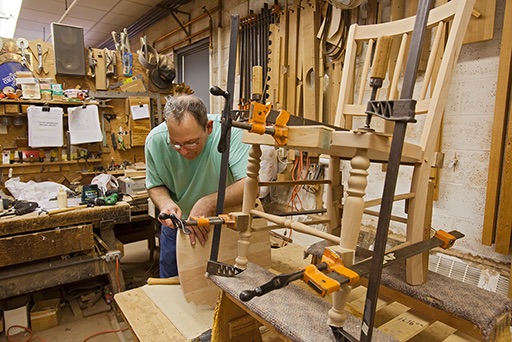3.2 Tangible resources and ‘know how’
Resources are interrelated. Think back to the chair-making class and how transformations can overlap – the human resources, the machines, the location, the reputation, the quality of the materials and the ‘know how’ all link together.
In particular, there is a link between the ‘know how’ and the tangible resources, which can be difficult to untangle.
When thinking about the economy as something based on knowledge or information, it is easy to forget that the realignment of tangible resources could be a source of innovation and provide a competitive advantage. For example, much has been made of the role of technology in the creation of disruptive innovations. Tech companies can disrupt whole markets using technology to meet an unmet demand. This disruption often comes through at a lower price point or by dispensing with superfluous levels of service (Christensen et al., 2015).
Think back to Session 5 where there was discussion on reducing ‘friction’ and increasing convenience through innovation, which was highlighted through the mobile banking example. This type of innovation is often called disruptive innovation where a smaller company with fewer resources can successfully challenge an established large player in the marketplace by offering alternatives (often at lower cost and with broader customer appeal). This often draws new customers into the market place.
The concept of disruption can be extended to differentiate between demand-led disruption and supply-side disruption (Gans, 2016). The former is where new features or functionality provided go on to change what customers are looking for in a product (e.g. cheaper or more efficiencies). Meanwhile, an example of supply-side disruption is the entry of Apple into the smartphone marketplace, allowing people to go beyond text messaging and emails (something which Blackberry had enabled very well until that point). Apple effectively provided a handheld computer.
Over time most products or services, from making a printer to a hotel-stay, develop set ways of doing things. Improvements to accepted ways of working are made in incremental stages. Processes and ways of working are a means of organising and aligning resources with capabilities and tasks, and it may be your specialist capabilities or access to particular resources that provide a source of competitive advantage. When a radically different approach or a new technology offers the opportunity to change how things are done, this is supply-side disruption (Gans, 2016).
A lot is written about how those already in the market (incumbents) can compete with new entrants engaged in disruptive innovation. However, it can also be applied to new enterprises. Entrepreneurs often have a new way of looking at things and in Sessions 1 and 4 it was suggested that one of the key advantages you might have is being close to your customers – indeed you might be ‘a customer’ who sees a way to improve things.
Another potential source of innovation relates to finding new ways of delivering value, of putting products or services together in different ways and disrupting existing routines. How disruptive will you be? Will you change the way that others operate? What in your business model might they seek to imitate?
Next you will start to think about the capabilities of your enterprise.

